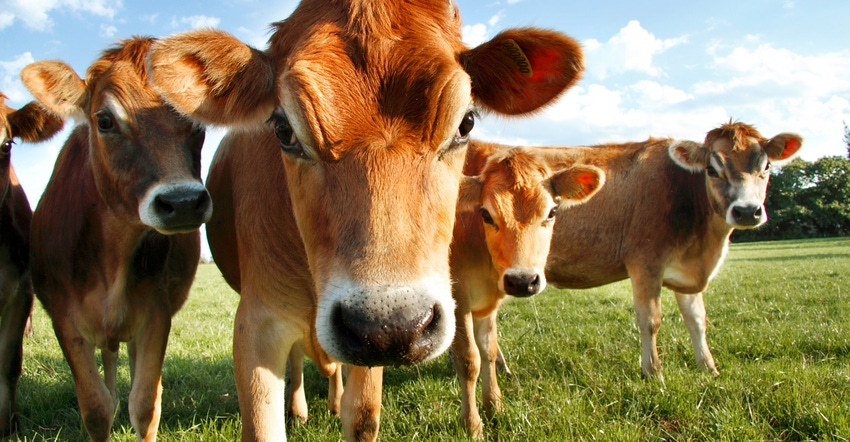May 3, 2022

Heat stress is a major factor that negatively influences livestock production and performance. An upward shift in temperature, especially accompanied by an increase in humidity, may bring heat stress to animals. The effects of heat stress often show a drop in feed intake or milk production, and can even result in death.
A common tool used to determine heat stress is the Temperature Humidity Index. Producers may use this chart as a guide to determine the level of heat stress that occurs when both air temperature and humidity are combined. As both heat and humidity rise, the animal experiences a higher degree of heat stress. The longer the duration of heat stress, the more pronounced the effects on animal well-being and production.
Studies have shown when THI reaches 72, and more recently 68, lactating dairy cattle have shown a reduction in milk production. Heat stress is known to have a delayed response in cattle. By the time producers notice a drop in feed intake or milk production, the animals already may have experienced the effects of heat stress. Therefore, producers should be proactive and plan to prevent their cattle from any ill effects during the upcoming hot and humid weather.
The THI chart is a good tool to use, but eye of the master is still the best strategy for detecting heat stress symptoms, as individual animals can respond differently within the same environments. All animals, regardless of age or stage of lactation, can be exposed to heat stress. Check all animals for heat stress symptoms, and pay close attention to any cattle that may be sick, as they pose a higher risk of setbacks during extreme weather.
Symptoms and solutions
During times of heat stress, cattle gain heat faster than they lose it. One of the first signs of hot cattle is an increase in respiration rate. A normal respiration rate for cattle is 60 breaths per minute. When producers see a pen of cattle or a calf in a hutch breathing faster than normal, then it is time to employ cooling techniques.
Watch for animals standing for longer periods of time than usual, as cattle expel heat more effectively while standing. Watch for severe symptoms such as panting, mouth wide open, tongue hanging out, drooling or a combination of these.
Sprinklers. Sprinklers installed over the feed bunk areas have proven to cool animals effectively in Wisconsin climates. Producers who use sprinklers have seen their cattle remain cooler and spend more time eating at the bunk than those without sprinklers. Be aware that cattle may stand under the sprinklers for long periods of time cooling themselves, eating or not, and producers should watch for lameness following periods of hot weather.
Shade. All animals, regardless of age or stage of lactation, should have shade available. Large trees, buildings or roofs with adequate ventilation, or temporary structures are all good options for blocking the sun’s intense rays during the hottest periods of the day. Temporary outside roof structures are best at 12 feet high or higher, running north to south. This allows for cattle to follow the shade as the sun moves throughout the day.
Air movement. Air circulation is important, as fast air movement provides cattle the ability to dissipate heat, adding a cooling effect before evaporating the moisture. The goal for air movement in summer is 40 to 60 air exchanges per hour. Air movement should be at least 200 feet per minute (2.3 miles per hour) — and ideally 400 feet per minute (4.6 mph) — and this air movement should be felt 20 to 30 inches above the stall base. Producers may use an anemometer, such as those sold by Kestrel, to monitor air movement accurately.
Water. Water is the most important nutrient for cattle. It is especially important when heat stress is a concern. Increased respiration and urination, along with the cooling techniques an animal uses such as panting and sweating, will decrease the body’s hydration. Water intake may increase 20% or more during times of heat stress. Check waterers to make sure there is an adequate supply of water, and make sure all animals have access to clean, fresh water at all times.
Grotjan is the Extension dairy and livestock educator in Outagamie County, Wis.
You May Also Like




